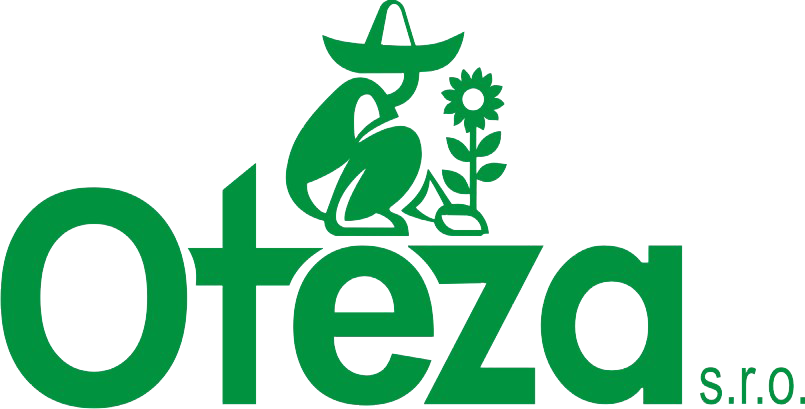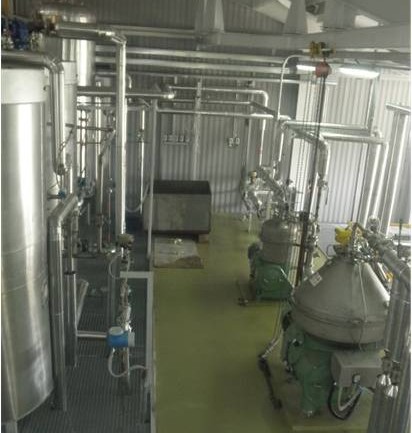Degumming
The equipment is intended for the continuous degumming of the vegetable oil. It is used for the removal of hydratable and non-hydratable phospholipids and free fatty acids (FFA) from crude oil. For the removal of phospholipids and FFAs, two centrifugal separators are used in the process to substantially increase process efficiency and stability in terms of quality of output oil. The equipment works on the principle of the reaction of undesirable substances in oil with acid and, in the case of acid and alkali reduction, with lye and water. The phospholipids coagulate in the process and are separated from the oil on separators.
The degumming technology serves to reduce phosphorus, free fatty acids, soaps and moisture in crude oil.
The equipment works continuously and is fully automated.
Depending on which substances are removed, the following are used:
- Water degumming
- Acid degumming
- Special degumming
- Top degumming
Water degumming:
Adding water to oil causes hydratable phosphatides to coagulate, and they are then centrifuged in a separator.
Phosphorus is reduced to 50 to 200 ppm.
Acid degumming:
This equipment uses the properties of hydratable phospholipids that accumulate at the oil-water interface and then aggregate.
The addition of acid provides an environment conducive to clumping, and at the same time for converting a portion of the non-hydratable phospholipids into hydratable, i.e. removable.
Phosphorus is thereby lowered to less than 50 ppm.
Special degumming:
The principle of this technology is the same, but a small amount of lye is added to neutralize the acid.
Phosphorus is lowered to less than 30 ppm.
Top degumming:
In addition to phosphorus, acidity and soaps are also removed in this equipment. The disadvantage is the formation of soapstock.
Phosphorus is lowered to less than 10 ppm.
Description of the process:
The crude filtered oil enters the process at a temperature of 5-35°C through a recuperative heat exchanger, where it is heated by the output oil from the process. Subsequently, it is heated in the heat exchanger by a heating medium to the desired temperature.
After adding the appropriate amount of acid in front of the first dynamic mixer, the oil in the dynamic mixer is sufficiently mixed with the acid and proceeds to the vessel where the acid reacts with the non-hydratable phospholipids.
It then proceeds to the second dynamic mixer, where precise amounts of lye with water are added, and then continues to the impeller-equipped reactor , where further chemical reactions, or precipitation of phospholipids, occurs.
Then the oil enters the separator. The desired temperature is reached before the inlet and precipitated mucus is separated from the oil in the separator.
Mucus is transferred to containers according to use of lye. If lye is used in the process of removing fatty acids, waste from the centrifuge is called soapstock. If lye is not used to remove fatty acids, it is called gums.
After centrifuging, the oil is pumped through the recuperative heat exchanger, where it is preheated with the output oil, and continues to the heat exchanger where it is heated with heating media. Washing water is added to the heated oil and the oil is pumped through the third dynamic mixer into the second separator, where water and soaps are separated from the oil.
The oil from the separator is conveyed to a vacuum dryer where the water content in the oil is minimized. From the dryer, the oil is pumped through the filters into a storage container. The vacuum in the dryer is provided by a water-ring with its own cooling circuit.
The condensed water vapour is lifted into a separating storage tank.


